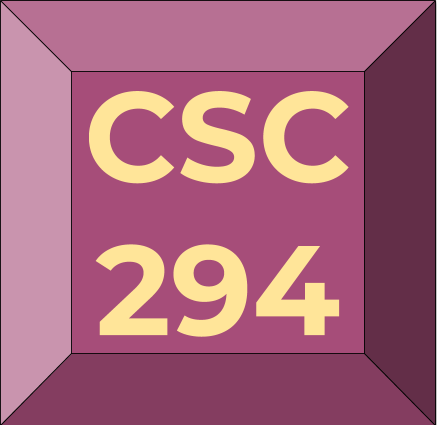Assessment
Contents
Assessment¶
Just like beginning a project, we begin this course with nothing completed yet; similarly, we begin the semester with no points, just yet. As assignments are assigned and returned we will slowly build points towards the 1000 possible points. In keeping with this philosophy, each assignment adds to your total score. In more traditional courses, one might begin with 100% and have their grade slowly chipped down to a final score. Instead in this course, we are building our grades up in concert with our knowledge about machine learning. View each assignment as a reflection of the depth of your machine learning knowledge base.
Grading Practicalities¶
There will be three kinds of grading for this course: 1) rubrics (supported by the checkpoint system), 2) on completion, and 3) with student input.
Homework assignments and projects will be graded under typical rubric grading. Depending on the assignment, detailed rubrics may be issued before the assignment is submitted, while in other cases only general outlines will be given in advance of the assignment.
Labs will be graded on completion. Note that completion here means that the work was completed in good faith. The act of turning in something does not guarantee a score of completion. But any work that is clearly done in good faith will be marked as complete and will earn full marks.
The class engagement part of the course will be graded with student input.
There are four parts of your grade: 1) labs, 2) homework, 3) projects, and 4) course engagement. The 1000 possible points for the course are distributed as follows:
Labs - 240 points: Each lab is worth 12 points and there are 25 labs for a total of 300 possible points.
Homework - 260 points: Each homework is worth 52 points and there are 6 homework assignments for a total of 312 possible points.
Projects - 300 points: Each project is worth 100 points and there are 4 projects for a total of 400 possible points.
Course Engagement - 200 points: This part of your grade with student input. After your mid-semester conference, you will reflect on your engagement with the course so far and make a plan for the remainder of the semester. That plan is what you will then use to assign yourself a grade for the course engagement part of your grade.
Flexibility in grading structure¶
Note
For the lab, homework, and project parts of your grade, there are many more possible points than what the final grade computation uses
To help you keep track of your grade, there is a grading matrix on google docs.
Translating to the “real world”¶
These systems attempt to match my experience of being in the “real world.” Assignments under the first system (ie. labs, homework assignments, and projects), you need to do about 80% of them well to get full credit for 100% in that portion of the grade. This matches my daily life where I can physically get to about 80% of my to-do list. Under the second system, it is often easier to edit a draft than to start from a blank page, and having small deadlines (where the reward is quick feedback) gives structure to larger projects.
While I do believe that each assignment for this course is important, I also believe that the college structure does not always allow you to practice “real world” decisions such as balancing your health with your work. So while I will not tell you to hand in an assignment or to not hand one in, I would love to listen to you practicing making these decisions.
Latework¶
Instead of firm deadlines throughout the semester, we will be using “best by dates.” These best by dates are my recommendation of when you should aim to complete work to continue making progress in the course. If you work best with firm deadlines, then you can treat these best by dates as due dates.
All of these best by dates are listed on the Detailed Course Schedule. This is a great moment to note these dates your system for keeping track of your work (ie. planner, calendar, etc). (If you want to really stretch here, do this for all major assignments in all your courses.)
In general, later course content builds on previous content, and if one is spending lots of time on an assignment (and thus is well past the recommended “best by” date), then there is less time for the next assignment. If you find yourself routinely working on assignments well past their best by dates, let’s check in.
The only two firm deadlines of the course are the last day of classes and the last day of finals:
Due on the Last day of classes – All labs, all homework assignments, and the first two projects
Due on the last day of finals – The last two projects and your engagement journal
There are no extensions to these two deadlines without intervention from a class dean.
Letter grades:¶
Traditional letter grades will be assigned using the below listed minimum points:
Letter Grade |
Number of points |
|---|---|
A |
950 - 1000 pts |
A- |
900 - 949 pts |
B |
800 - 899 pts |
C |
700 - 799 pts |
D |
600 - 699 pts |
At the instructor’s discretion, these grade cutoffs may be lowered at the end of the semester, but they will never be raised. Cut-offs not stated here for the pluses and minuses will be determined at the end of the semester.
